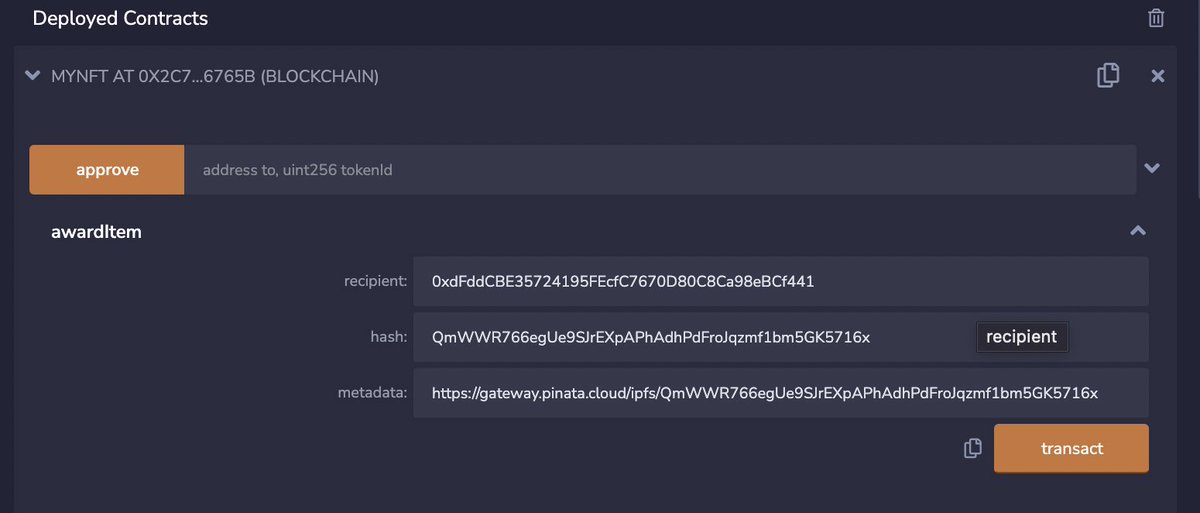Day 62 of #100DaysOfDeFI 🚀 Today I continued deploying smart contracts on Ethereum testnet Rinkeby and uploaded a duck 🦆 NFT on OpenSea 👩🏻💻
#womenwhocode #100DaysOfCode
Summary 🧵
#womenwhocode #100DaysOfCode
Summary 🧵

1/ First, prepare the jpeg file and metadata for the NFT. We’ll use Pinata platform for hosting files 🦙 A jpeg is an image we want to deploy as an NFT and a json file is the metadata. So, create an account in pinata.cloud and first upload the image. 

2/ There will be a CID generated that we have to add to the json file. In name section add “gateway.pinata.cloud/ipfs/” and the image CID. Upload the json file too 👩🏻💻 

3/ Now we’ll go to Remix and create an NFT smart contract. As we learned on day 58 of the challenge, ERC721 is a token standard for NFTs 👩🏻💻 

5/ Now we can use the create function awardItem and mint an NFT! Here we have to use the following data:
🔹 recipient: your address (or the one who will get the NFT);
🔹 hash: json file CID;
🔹 “gateway.pinata.cloud/ipfs/” + json file cid.
🔹 recipient: your address (or the one who will get the NFT);
🔹 hash: json file CID;
🔹 “gateway.pinata.cloud/ipfs/” + json file cid.

6/ Go to testnets.opensea.io, connect with MetaMask wallet and in “My collections” tab you’ll see the minted NFT 🎉 

• • •
Missing some Tweet in this thread? You can try to
force a refresh














